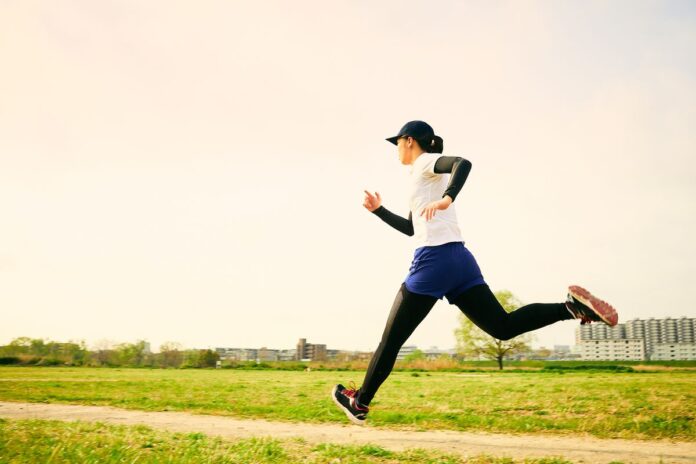Running is a natural human activity practiced for thousands of years. However, understanding the biomechanics behind running and analyzing gait patterns has become vital to improving performance, preventing injuries, and enhancing the overall running experience. In this article, we will delve into the science of running mechanics and gait analysis, exploring how these fields contribute to optimizing running form and maximizing efficiency.
Understanding Running Mechanics:
Running mechanics refers to the complex movements and interactions between various body parts during the running stride. It involves coordinating muscles, joints, tendons, and ligaments to produce efficient and powerful forward motion. Proper running mechanics can help minimize energy wastage, reduce joint stress, and enhance the running economy.
The main components of running mechanics include posture, stride length, cadence, foot strike, and arm swing. Let’s explore each of these elements in detail:
1- Posture: Maintaining a good posture while running is crucial for efficient movement. This involves keeping the head up, shoulders relaxed, and spine aligned. Proper posture helps optimize breathing, balance, and alignment of the body.
2- Stride Length: Stride length refers to the distance covered by a single step. While it may vary among individuals, an optimal stride length allows for effective energy transfer and forward propulsion. Striking a balance between stride length and cadence is key to achieving efficient running mechanics.
3- Cadence: Cadence refers to the number of steps taken per minute. It plays a significant role in running efficiency and injury prevention. Research suggests that a cadence of around 180 steps per minute is optimal for most runners, as it reduces overstriding and excessive vertical oscillation.
4- Foot Strike: Foot strike refers to the part of the foot that first contacts the ground during running. There are three main types: heel strike, midfoot strike, and forefoot strike. Each foot strike pattern has advantages and considerations, and understanding which works best for an individual can help optimize running mechanics and reduce the risk of injury.
5- Arm Swing: The arm swing counterbalances leg movements during running. Proper arm swing mechanics aid in maintaining balance, generating momentum, and facilitating an efficient stride. Arms should swing naturally and relaxed, moving in sync with the opposite leg.
Gait Analysis:
Gait analysis systematically evaluates an individual’s running mechanics, typically through video recordings, motion sensors, or specialized equipment. It provides valuable insights into the kinematics and kinetics of running, allowing experts to identify strengths, weaknesses, and areas for improvement.
There are two main types of gait analysis: visual gait analysis and instrumented gait analysis. Visual gait analysis is conducted by trained professionals who observe and analyze a runner’s form, looking for any irregularities or biomechanical issues. Instrumented gait analysis utilizes motion capture systems, force plates, and pressure sensors to provide more precise and quantitative data on running mechanics.
Benefits of Running Mechanics and Gait Analysis:
1- Injury Prevention: By analyzing running mechanics, gait analysis can identify any imbalances, weaknesses, or faulty movement patterns that may contribute to injuries. With this knowledge, targeted interventions and corrective exercises can be prescribed to address these issues and reduce the risk of running-related injuries.
2- Performance Enhancement: Optimizing running mechanics can improve running economy, speed, and endurance. Gait analysis helps identify areas of inefficiency, allowing runners to make necessary adjustments to enhance their performance.
3- Personalized Training Programs: By understanding an individual’s unique running mechanics, coaches and trainers can develop customized training programs to improve specific running form aspects. This personalized approach can lead to more effective training and better results, as it addresses each runner’s specific needs and areas for improvement.
4- Rehabilitation and Return to Running: Gait analysis is a valuable tool in the rehabilitation process for runners recovering from injuries. It helps identify compensatory movements or altered mechanics that may hinder recovery. By addressing these issues through targeted exercises and adjustments to running form, gait analysis aids in a safe and effective return to running.
5- Equipment and Footwear Selection: Running mechanics and gait analysis can guide individuals in selecting the appropriate footwear and equipment. By analyzing factors such as foot strike pattern and pronation, experts can recommend shoes with the proper support and cushioning to optimize comfort and reduce the risk of injury.
Conclusion:
The science of running mechanics and gait analysis offers valuable insights into the intricate movements and biomechanics involved in running. By understanding and analyzing these aspects, runners can optimize their form, improve performance, and reduce the risk of injuries.
Whether you’re a recreational runner or an elite athlete, considering a gait analysis and understanding your running mechanics can significantly impact your overall running experience.
Consult with a running specialist or sports professional for a comprehensive gait analysis and gain valuable insights into your unique running mechanics.
By harnessing the power of science, you can unlock your full running potential and enjoy the countless benefits of efficient and biomechanically sound running.
Read Also
- Modern Approaches to Adolescent Mental Health Treatment for Lasting RecoveryWith increasing numbers of teens experiencing emotional and behavioral health concerns, adolescent mental health treatment has become more essential than ever. Conditions such as anxiety, depression, trauma and mood instability are on the rise, and effective support must evolve with these growing needs. Today’s treatment models blend evidence-based therapy with flexible access and holistic care, giving… Read more: Modern Approaches to Adolescent Mental Health Treatment for Lasting Recovery
- How to Find a 5-Star Dentist Near YouChoosing a dentist is more than just finding someone who can clean your teeth. It’s about selecting a trusted partner in your long-term oral health. A 5-star dentist not only provides excellent clinical care but also delivers a positive patient experience, from the moment you walk in until the moment you leave. Whether you’re new… Read more: How to Find a 5-Star Dentist Near You
- Your Easy-Peasy Guide to Brewing Amazing MatchaHey there! So, you’ve heard all the buzz about matcha – that vibrant green powder that’s not just pretty but packed with good stuff? It can seem a little fancy and intimidating at first, but trust me, making a delicious cup at home is simpler than you think. Forget complicated ceremonies for now; let’s just… Read more: Your Easy-Peasy Guide to Brewing Amazing Matcha
- Embracing Holistic Wellness: Insights from a Lansing, MI Health CenterReframing Health: Moving Beyond Symptom Management Treating only symptoms often offers quick relief, yet long-term results stay out of reach. When care zeroes in on isolated complaints, the bigger picture, such as stress, behavior, or lifestyle, often gets missed. Research shows that whole-person care, which looks at physical, emotional, and environmental factors, yields better outcomes… Read more: Embracing Holistic Wellness: Insights from a Lansing, MI Health Center
- VO₂ Max Testing Explained: What It Is & Why It Matters for Your HealthVO₂ max sounds like a term reserved for elite athletes, but it’s among the most accurate measures of your lifetime and general condition. Moreover, it goes beyond performance. Monitoring your VO₂ max will help you to ascertain your body’s capacity to control stress, its oxygen consumption efficiency, and your internal ageing process. If you have… Read more: VO₂ Max Testing Explained: What It Is & Why It Matters for Your Health
- So, what exactly is matcha?Think of matcha as green tea turned up to eleven! Instead of steeping leaves and tossing them out, matcha is made by grinding whole green tea leaves into this super-fine, vibrant green powder. You whisk it right into hot water (or milk!), meaning you’re drinking the entire leaf. That’s why folks say you get way… Read more: So, what exactly is matcha?







